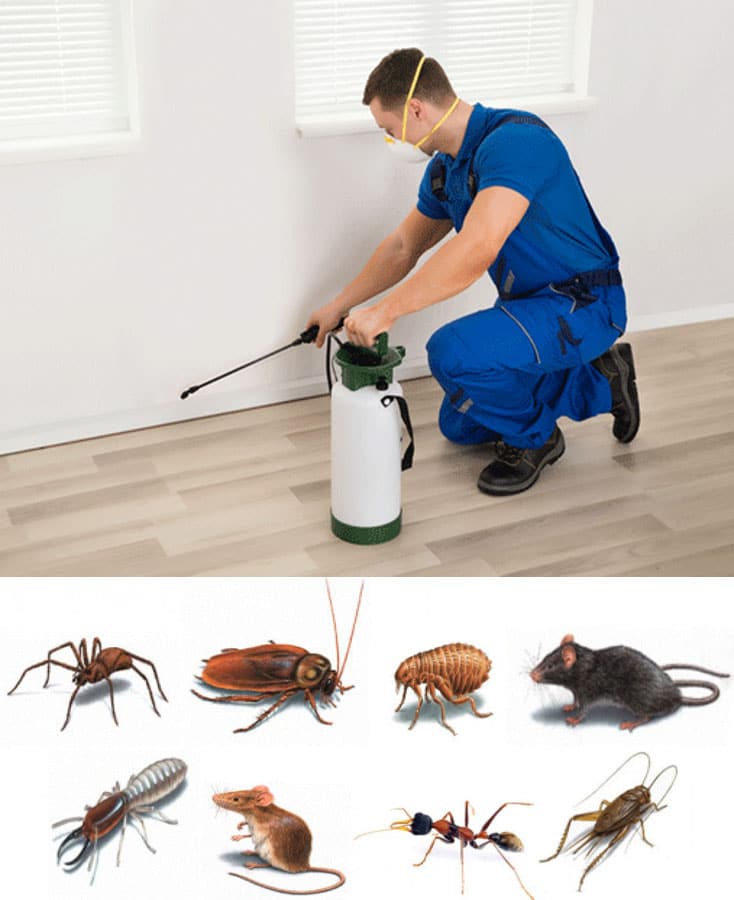A1 Bed Bug Exterminator Charlotte - Efficient and Affordable Services
A1 Bed Bug Exterminator Charlotte - Efficient and Affordable Services
Blog Article
Bed Pest Treatment Malfunction: Contrasting Chemical Vs. Non-Chemical Solutions
In the world of parasite control, especially when managing the persistent issue of bed bugs, the choice in between chemical and non-chemical therapy options can be a pivotal one. Both strategies offer distinct advantages and drawbacks, affecting variables such as efficiency, security factors to consider, and general cost. By checking out the nuanced information of each approach, a more clear understanding of which course to pursue in dealing with a bed insect problem can be attained.
Efficiency of Chemical Therapies
Chemical treatments for bed pest problems have actually been widely identified for their potent and quick effectiveness in eradicating these parasites. When taking into consideration the effectiveness of chemical treatments, it is important to recognize that they can provide a fast and complete remedy to a bed insect problem.
Additionally, chemical treatments have the benefit of providing recurring effects, suggesting that they can remain to get rid of bed pests also after the initial application. This recurring action is specifically helpful in combating any prospective re-infestations. Additionally, the quick action of chemical treatments can bring alleviation to individuals dealing with severe bed bug invasions, permitting them to restore control of their home rapidly.
Safety And Security Worry About Chemical Solutions
One essential aspect that needs cautious factor to consider when making use of chemical remedies for bed insect treatment is making certain the security of occupants and the setting. Exposure to specific chemicals used in bed bug treatments can lead to respiratory system issues, skin inflammation, or other unfavorable responses, especially in individuals with pre-existing problems or level of sensitivities.
Additionally, the ecological effect of chemical options is another substantial factor to consider. Some chemicals used in bed insect therapies may be damaging to valuable insects, wild animals, and ecosystems if they leach right into the dirt or water systems. It is necessary to use chemical therapies judiciously, complying with safety and security guidelines, and taking into consideration less hazardous choices to reduce these threats and make sure the safe and effective administration of bed insect problems.
Advantages of Non-Chemical Techniques
Considering the potential safety issues and environmental impact related to chemical services for bed bug treatment, discovering non-chemical techniques offers an encouraging alternative with several unique benefits. Non-chemical approaches supply a much safer choice for homes, particularly those with kids, pet dogs, or individuals delicate to extreme chemicals. These techniques get rid of the risks of direct exposure to poisonous compounds, minimizing the potential for adverse health and wellness impacts. Moreover, non-chemical treatments are eco-friendly, as they do not add to air or water contamination, making them a sustainable selection for parasite control.
Furthermore, non-chemical solutions can be reliable in targeting bed insects, consisting of hard-to-reach locations where chemical therapies might not penetrate - A1 charlotte bed bug exterminator. Approaches such as heat treatment, vacuuming, steam cleansing, and bed mattress coverings provide complete obliteration without the usage of harmful chemicals.
Limitations of Non-Chemical Treatments

In addition, non-chemical therapies frequently need numerous applications to attain successful obliteration. This can be time-consuming and may not always assure complete elimination of all bed bugs and their eggs, especially in surprise or hard-to-reach locations.
Additionally, the success of non-chemical treatments greatly relies upon appropriate execution and thoroughness, which can be testing for people without specialist know-how. Inadequate application of non-chemical techniques might lead to insufficient obliteration, bring about consistent problems and the demand for added therapies.
Consequently, while non-chemical therapies have their advantages, it is vital to recognize these constraints and consider them when establishing one of the most reliable strategy for taking care of bed pest invasions.
Price Contrast: Chemical Vs. Non-Chemical Options
Provided the restrictions linked with non-chemical treatments, a necessary aspect to examine in the context of bed bug management is the expense contrast in between chemical and non-chemical choices. Chemical treatments normally involve the application of insecticides by professionals, which can vary from $250 to $900 per space, depending upon the seriousness pest guard of the infestation and the dimension of the location to be treated. On the other hand, non-chemical therapies like warm treatment or vapor can be a lot more costly, with prices varying from $1,000 to $6,000 for an entire home. While the initial expense of chemical treatments may seem reduced, several treatments may be needed to fully eradicate the invasion, potentially boosting the general cost. On the various other hand, non-chemical options might provide a much more lasting and environment-friendly solution, although they can be cost-prohibitive for some people. Inevitably, when thinking about the price of bed insect therapy options, it is necessary to evaluate the ahead of time expenses versus the effectiveness and long-term sustainability of what to use for pest control the picked method.
Conclusion

Considering the potential safety and security worries and environmental effect linked with chemical services for bed bug treatment, exploring non-chemical techniques provides an encouraging choice with numerous distinctive benefits.Offered the limitations associated with non-chemical therapies, a necessary facet to examine in the context of bed insect monitoring is the expense contrast between chemical and non-chemical choices. In contrast, non-chemical therapies like heat therapy or heavy steam can be a lot more costly, with expenses ranging from $1,000 to $6,000 for an entire home. While the initial expense of chemical treatments may appear lower, several therapies may be called for to fully get rid of the problem, possibly boosting the total expense.In final thought, when comparing chemical and non-chemical bed pest treatment alternatives, it is crucial to take into consideration effectiveness, security, advantages, restrictions, and cost.
Report this page